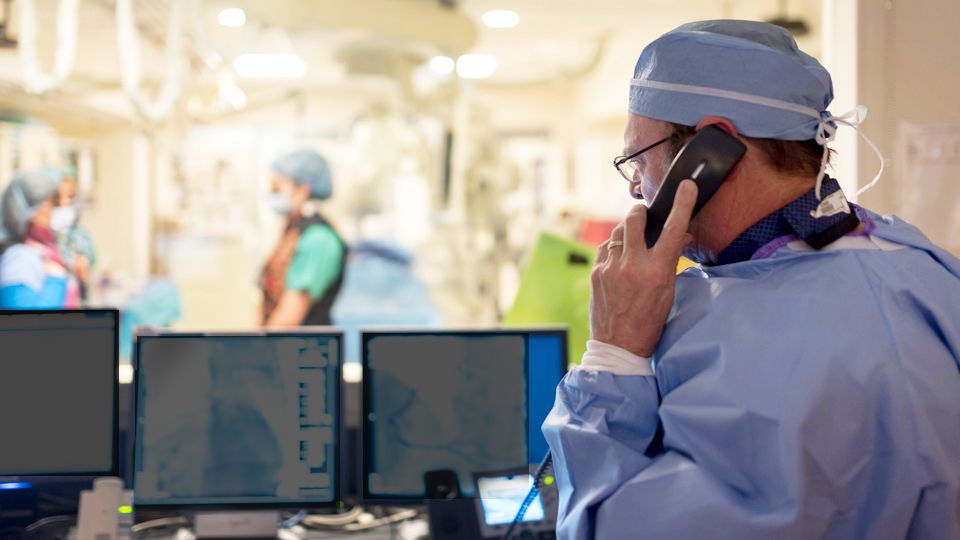Preparing for Your Catheterization Procedure
Interventional cardiologists at NYU Langone’s Cardiac Catheterization Laboratory perform a variety of catheter-based diagnostic and therapeutic treatments, including coronary artery stenting.

Cardiac catheterization takes place at the Jean and David Blechman Cardiac and Vascular Center, Kimmel Pavilion, NYU Langone Hospital—Brooklyn, and NYU Langone Hospital—Long Island. An angiogram, which uses X-ray images to look for blocked blood vessels, is the most common procedure we perform. We use the imaging results from the angiogram to diagnose blockages in the heart as well as in the legs and neck.
If a blockage is found, your doctor might use a stent to open up your artery. Stenting is a catheter-based treatment. Our specialists guide a long, hollow tube called a catheter through an artery or vein to the procedure site. The location of the incision depends on the type of procedure you are having. In most cases, you are awake for the procedure and can go home the same day.
Here is what you need to know before, during, and after the procedure.
Preparing for the Catheterization Procedure
Expect a phone call the day before the procedure from a physician assistant or nurse practitioner telling you what to expect the day of your visit, including what time to arrive. Someone must be available to take you home after the procedure, so please arrange for a family member or friend to pick you up. Learn more about our visitor policies and who can accompany you for the procedure.
Talk with your doctor about whether you should take your medications in the morning, especially if you are taking blood thinners or anticlotting medicines or if you have diabetes. Otherwise, do not eat or drink anything in the morning unless your doctor or nurse tells you to do so.
Please bring the following items with you:
- all medications in their bottles or a list of all medications with dosages
- insurance card(s)
- photo identification such as a driver’s license or state identification card
It is best to leave all valuables, including money and jewelry, at home.
Please tell the admitting nurse if you have kidney disease, any allergies to medications, or an allergy to or have had a reaction to intravenous (IV) dye.
During the Catheterization Procedure
When you arrive in the catheterization lab, the nurse may perform a blood test or take you for a chest X-ray. Your doctor places an IV line to deliver any necessary medicine during the procedure. A mild anesthetic is used on the site where the catheter is to be inserted. The procedure should be pain-free.
After the Catheterization Procedure
After the procedure, you stay in our recovery area for two to eight hours before being discharged. Your doctor bandages the incision site, and you are asked to rest and lie still until a member of your medical team says you are ready to leave.
We encourage you to bring reading materials or other activities to keep you busy while you wait. Most people go home the same day, but some procedures require that you be monitored in the hospital overnight.
When you are ready to leave, you are given instructions about your medication. This may include new prescriptions that your doctor has given you.
You are advised not to lift heavy objects or participate in strenuous activity for two weeks. You can shower the day after the procedure, but please wait one week before taking a bath. You are also told when to follow up with your doctor.